Intro
Learn about gallbladder surgery recovery, including post-op care, diet, and lifestyle changes to ensure a smooth healing process and minimize complications, with expert tips for a speedy recovery from cholecystectomy.
The gallbladder is a small, pear-shaped organ located under the liver that plays a crucial role in digesting fats. However, sometimes the gallbladder can become inflamed or blocked, leading to severe pain and discomfort. In such cases, surgical removal of the gallbladder, also known as cholecystectomy, may be necessary. While the surgery itself is relatively straightforward, the recovery process can be challenging and requires careful attention to ensure a smooth and speedy return to normal activities.
Gallbladder surgery recovery is a critical aspect of the overall treatment process, and it's essential to understand what to expect during this period. The recovery process can vary depending on the individual's overall health, the type of surgery performed, and the presence of any underlying medical conditions. Generally, patients can expect to spend several days or weeks recovering from the surgery, during which time they may experience pain, discomfort, and fatigue.
A comprehensive understanding of the recovery process can help patients prepare themselves for the challenges ahead and take necessary steps to ensure a smooth and successful recovery. This includes following a healthy diet, staying hydrated, managing pain and discomfort, and attending follow-up appointments with the surgeon. By taking an active role in their recovery, patients can minimize the risk of complications and get back to their normal routine as quickly as possible.
Gallbladder Surgery Overview
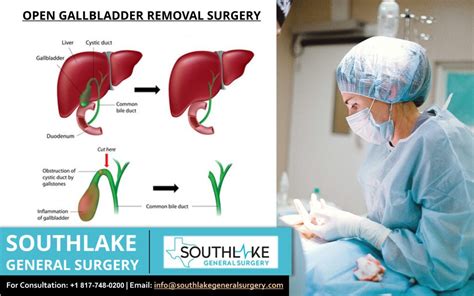
The decision to perform gallbladder surgery is typically made when other treatment options have failed to provide relief from symptoms. The surgery is usually performed under general anesthesia, which means the patient is asleep during the procedure. The surgeon will then make the necessary incisions, remove the gallbladder, and close the incisions. The entire procedure typically takes about 1-2 hours to complete.
Types of Gallbladder Surgery
There are two main types of gallbladder surgery: open cholecystectomy and laparoscopic cholecystectomy. Open cholecystectomy involves making a large incision in the abdomen to access the gallbladder, while laparoscopic cholecystectomy involves making several small incisions and using a laparoscope to visualize the gallbladder. Laparoscopic cholecystectomy is generally less invasive and results in less post-operative pain and scarring.Preparation for Gallbladder Surgery Recovery
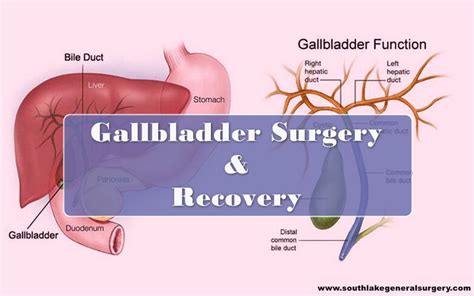
Patients should also prepare their home for recovery by setting up a comfortable resting area, stocking up on healthy foods and drinks, and having a phone nearby in case of emergencies. It's also a good idea to have a list of important phone numbers, such as the surgeon's office and the hospital, in case of any questions or concerns.
Recovery Timeline
The recovery timeline for gallbladder surgery can vary depending on the individual's overall health and the type of surgery performed. Generally, patients can expect to spend several days or weeks recovering from the surgery. The first few days after surgery are usually the most challenging, with patients experiencing pain, discomfort, and fatigue.As the days go by, patients can gradually return to their normal activities, including eating, walking, and light exercise. It's essential to follow the surgeon's instructions and attend follow-up appointments to ensure a smooth and successful recovery.
Gallbladder Surgery Recovery Tips

- Following a healthy diet that is low in fat and high in fiber
- Staying hydrated by drinking plenty of water and other fluids
- Managing pain and discomfort with medication and rest
- Attending follow-up appointments with the surgeon to ensure a smooth and successful recovery
- Avoiding heavy lifting, bending, and strenuous activities for several weeks after surgery
It's also essential to be aware of the potential complications that can occur after gallbladder surgery, such as infection, bleeding, and bowel obstruction. Patients should seek medical attention immediately if they experience any symptoms of these complications, such as fever, chills, or severe abdominal pain.
Pain Management
Pain management is a critical aspect of gallbladder surgery recovery. Patients can expect to experience some degree of pain and discomfort after the surgery, which can be managed with medication and rest. The surgeon may prescribe pain medication, such as acetaminophen or ibuprofen, to help manage pain and discomfort.It's essential to follow the surgeon's instructions for taking pain medication and to seek medical attention if the pain becomes severe or unbearable. Patients can also use non-medical methods to manage pain, such as deep breathing, meditation, and relaxation techniques.
Gallbladder Surgery Recovery Diet
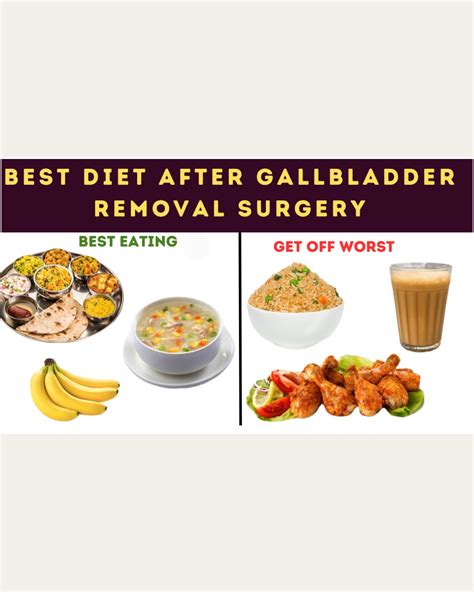
Patients should avoid eating foods that are high in fat, such as fried foods, fatty meats, and full-fat dairy products. They should also avoid eating spicy or acidic foods, such as citrus fruits and tomatoes, which can irritate the stomach and worsen symptoms.
Nutritional Supplements
Nutritional supplements can play a crucial role in gallbladder surgery recovery. Patients may need to take supplements to ensure they are getting enough nutrients, such as vitamins and minerals. The surgeon may recommend taking supplements, such as vitamin C, vitamin D, and calcium, to help support the recovery process.It's essential to follow the surgeon's instructions for taking supplements and to seek medical attention if any adverse reactions occur.
Gallbladder Surgery Recovery Complications
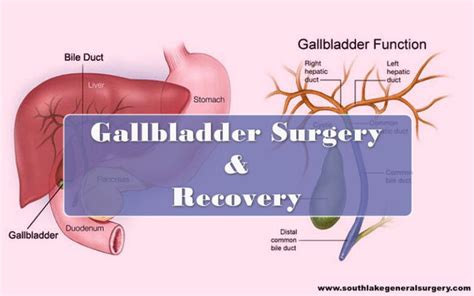
- Infection: Patients may develop an infection after surgery, which can be treated with antibiotics.
- Bleeding: Patients may experience bleeding after surgery, which can be treated with medication or additional surgery.
- Bowel obstruction: Patients may develop a bowel obstruction after surgery, which can be treated with medication or additional surgery.
- Adhesions: Patients may develop adhesions after surgery, which can cause bowel obstruction or other complications.
It's essential to seek medical attention immediately if any symptoms of these complications occur, such as fever, chills, or severe abdominal pain.
Follow-up Care
Follow-up care is a critical aspect of gallbladder surgery recovery. Patients should attend follow-up appointments with the surgeon to ensure a smooth and successful recovery. The surgeon may recommend follow-up appointments to:- Remove stitches or staples
- Check for signs of infection or other complications
- Monitor the patient's progress and adjust the treatment plan as needed
It's essential to follow the surgeon's instructions and attend all scheduled follow-up appointments to ensure a smooth and successful recovery.
Gallbladder Surgery Recovery FAQs
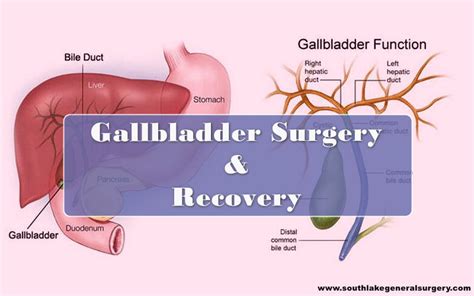
What are the risks and complications of gallbladder surgery?
+The risks and complications of gallbladder surgery include infection, bleeding, bowel obstruction, and adhesions. Patients should seek medical attention immediately if any symptoms of these complications occur.
How long does it take to recover from gallbladder surgery?
+The recovery time for gallbladder surgery can vary depending on the individual's overall health and the type of surgery performed. Generally, patients can expect to spend several days or weeks recovering from the surgery.
What are the dietary restrictions after gallbladder surgery?
+Patient should focus on eating foods that are low in fat and high in fiber, such as fruits, vegetables, whole grains, and lean proteins. They should avoid eating foods that are high in fat, such as fried foods, fatty meats, and full-fat dairy products.
We hope this comprehensive guide to gallbladder surgery recovery has been helpful in preparing you for the challenges ahead. Remember to follow your surgeon's instructions, attend follow-up appointments, and take necessary steps to ensure a smooth and successful recovery. If you have any further questions or concerns, don't hesitate to reach out to your healthcare provider. Share this article with your friends and family to help them understand the importance of gallbladder surgery recovery, and don't forget to leave a comment below with your thoughts and experiences.
